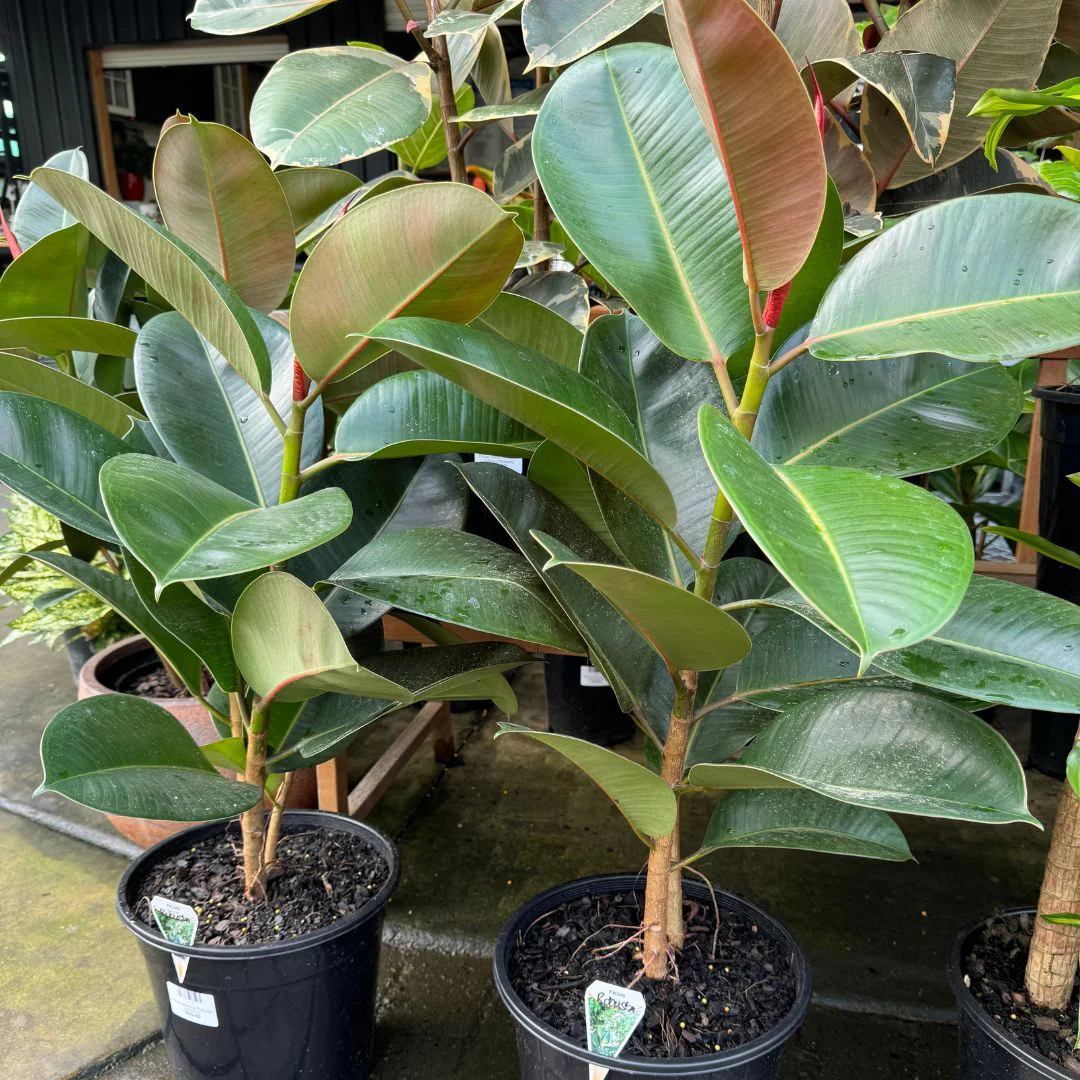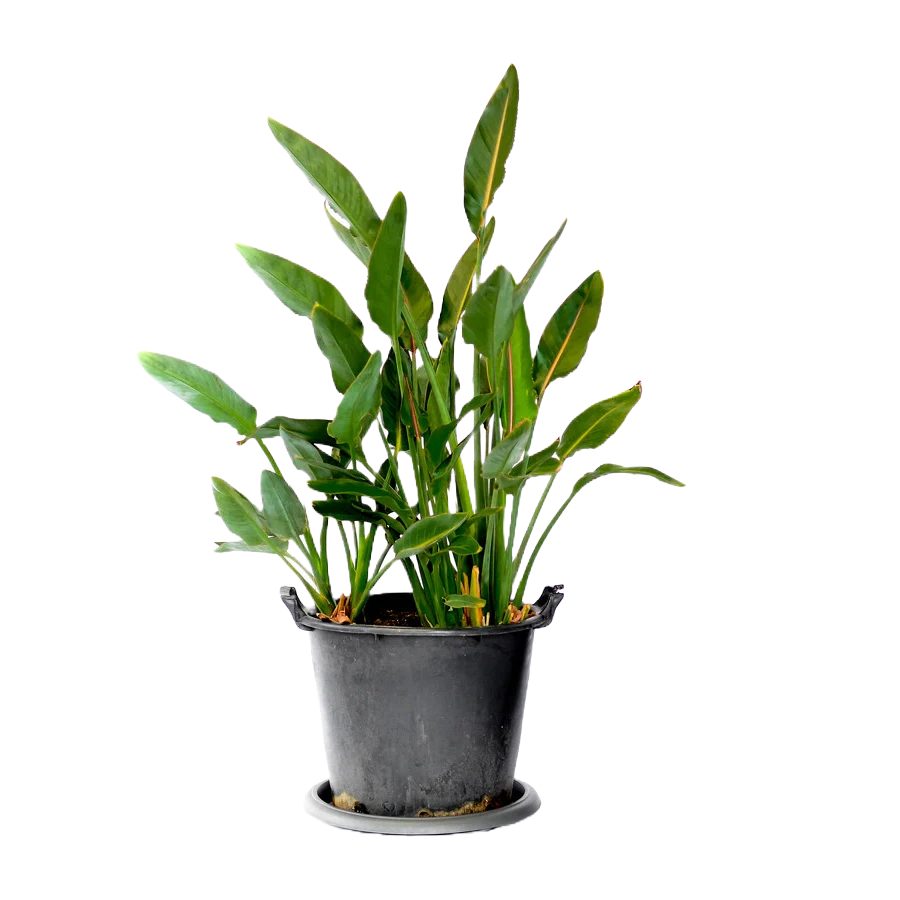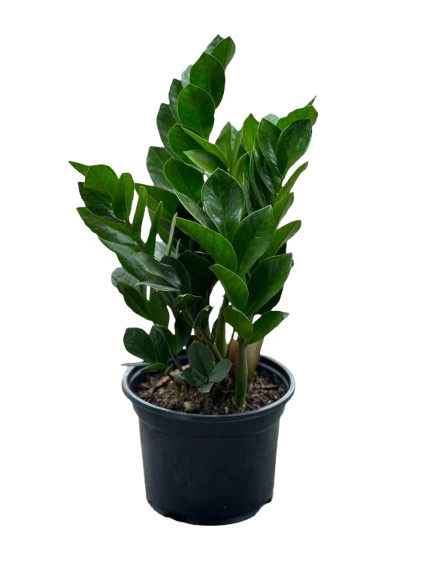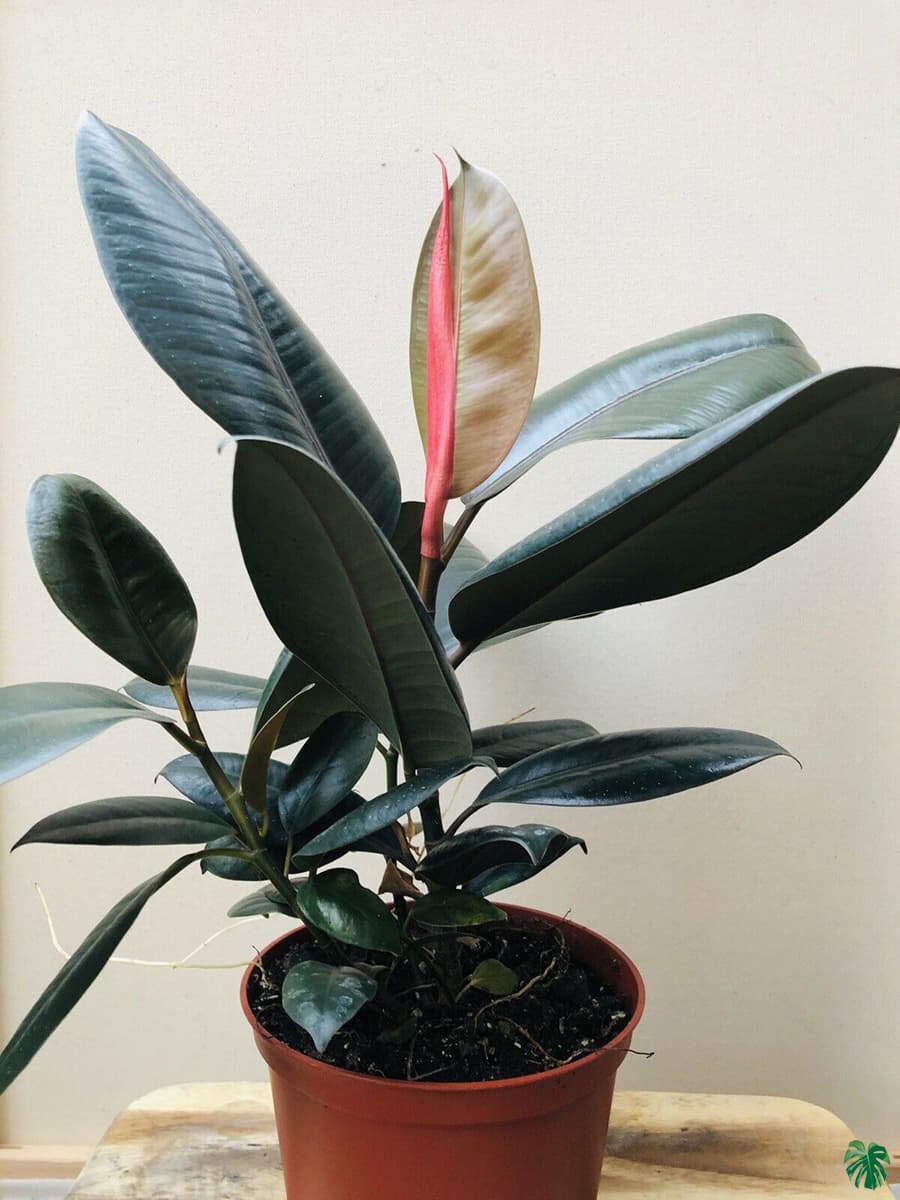
Why Grow Rubber Plant?
- Air purification: Removes formaldehyde and other toxins from indoor spaces.
- Low maintenance: Thrives with minimal fuss and forgiving to missed waterings.
- Bold aesthetic: Large, leathery leaves bring structure and visual weight to interiors.
- Versatile: Looks great in modern, boho, or tropical décor styles.
- Long lifespan: Can grow for years indoors, reaching 2–3 meters in height with good care.
Cultural & Historical Significance
- India: Considered sacred in some traditions; related to the Ficus religiosa tree, under which Buddha attained enlightenment.
- Asia & West Africa: Valued historically for its milky sap used in rubber production (hence the name).
- Symbolism: Represents abundance, growth, and good fortune—popular in Feng Shui for attracting prosperity and grounding energy.
Ideal Growing Conditions in Kenya
- Light: Bright, indirect light is best. Avoid harsh sun which can scorch the leaves.
- Temperature: Thrives in 18°C–30°C. Protect from cold drafts and extreme heat.
- Humidity: Medium to high humidity preferred. Mist occasionally if indoors.
- Soil: Well-draining mix with compost, cocopeat, or sand for aeration.
- Watering: Water when top 2–3 cm of soil is dry. Avoid soggy roots.
- Best regions: Nairobi, Thika, Kajiado, Limuru—any area with stable indoor temperatures.
How to Plant Rubber Plant
- Select a large pot with drainage holes or an outdoor shaded spot.
- Prepare soil mix: loamy soil + compost + perlite or pumice for drainage.
- Gently remove plant from its nursery pot and place in hole or pot at the same soil level.
- Backfill with soil, firm gently, and water thoroughly.
- Place in a bright indoor space with indirect sunlight.
Rubber Plant Care Tips
- Water: Every 7–10 days; reduce in cooler months.
- Fertilizer: Feed monthly with balanced liquid fertilizer during growing season (March–October).
- Pruning: Trim top shoots to control height and encourage branching.
- Wipe leaves: Dust occasionally with a damp cloth to maintain shine and function.
- Support: Use a stake for tall plants to prevent leaning.
Pests & Diseases
- Spider mites: Fine webbing under leaves. Treat with neem oil or insecticidal soap.
- Mealybugs: Cottony white clusters on leaves and stems. Dab off with alcohol or spray neem.
- Leaf drop: Usually from overwatering, cold exposure, or sudden environmental changes.
Is Rubber Plant Safe for Pets?
⚠️ Caution: Rubber Plants are mildly toxic to pets. If ingested, they can cause mouth irritation or vomiting in cats and dogs. Keep out of reach or choose pet-safe alternatives like Peperomia or Calathea.
Growing in Containers
The Rubber Plant is perfect for large floor pots indoors. Use a 30–40 cm wide pot with drainage holes. Rotate monthly to keep growth even and place near windows with filtered light. Re-pot every 1–2 years as it grows.
Where to Buy Rubber Plant in Kenya
Find stunning Rubber Plants at Planters.co.ke. Available in nursery bags and decorative planters, we deliver across Kenya and offer helpful advice for placement and care.
Final Thoughts
If you want an elegant, easy-to-grow statement plant, the Rubber Plant is a top pick. With its bold leaves, air-purifying qualities, and rich symbolism, it brings a grounded, serene energy into your home or office. A must-have for beginners and plant lovers alike.
Planters.co.ke is your trusted source for plants, pots, and all things green in Kenya. From starter herbs to exotic indoor plants, we help you grow beautiful spaces—naturally.
Recent Posts
- Asiatic Lily Bulbs in Kenya: Vibrant Color, Easy Growth & Garden Beauty
- Dendrobium Orchids: Elegant Blooms, Easy Care & Indoor Beauty
- Vanda Orchids: Vibrant Colors, Air-Grown Beauty & Elegant Displays
- Vriesea Bromeliads in Kenya: Elegant, Colorful & Easy to Grow
- Manuka : Beauty, Healing & Natural Resilience







